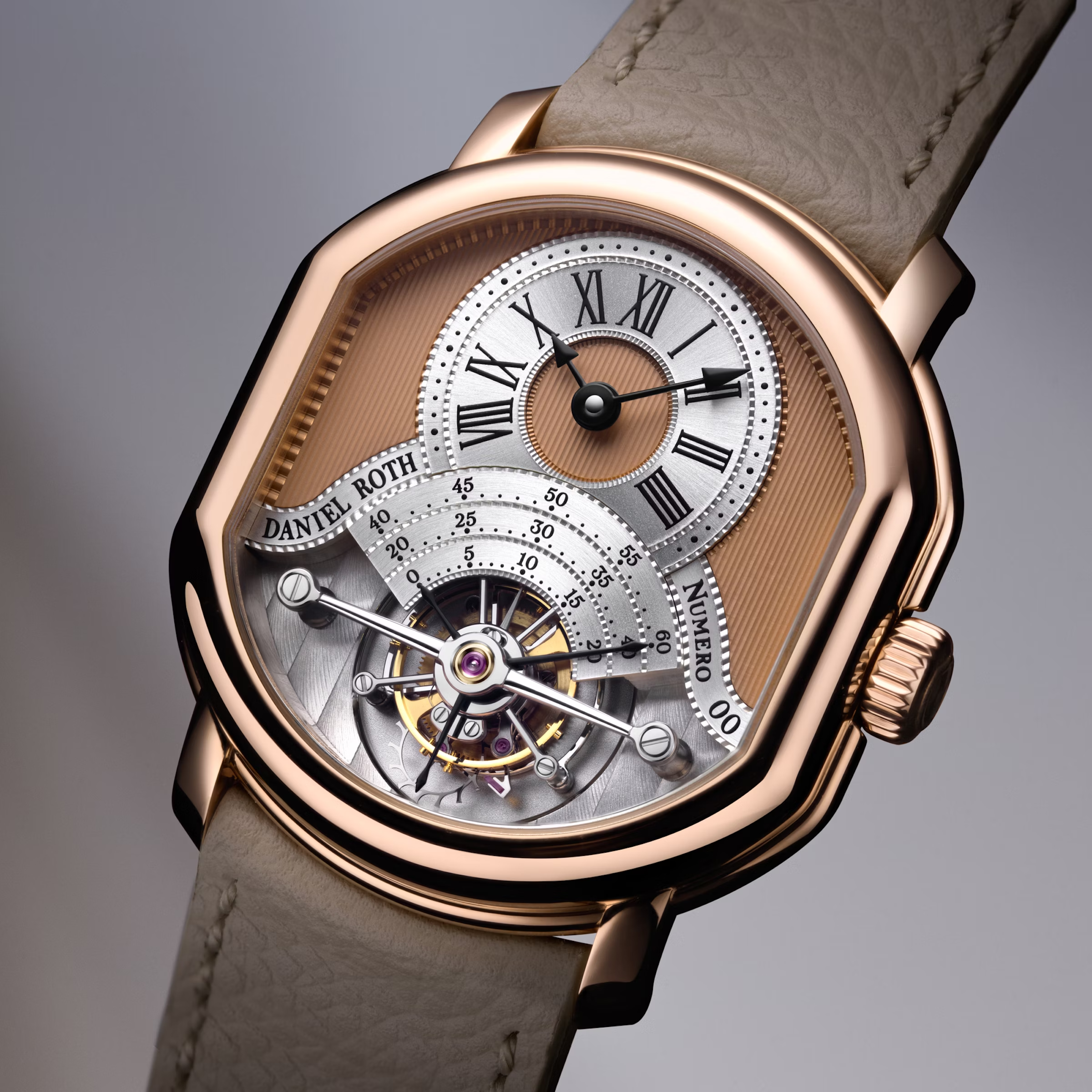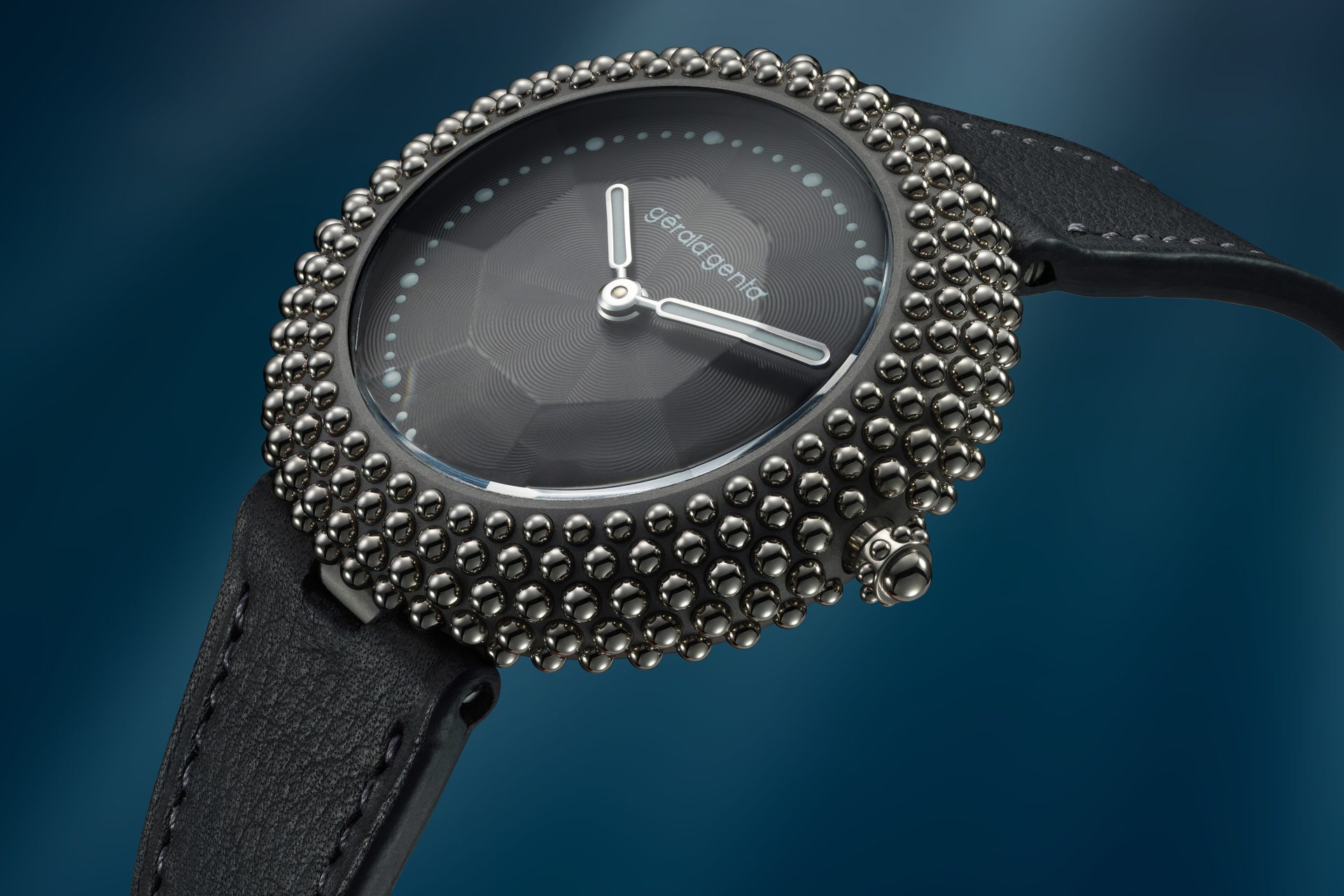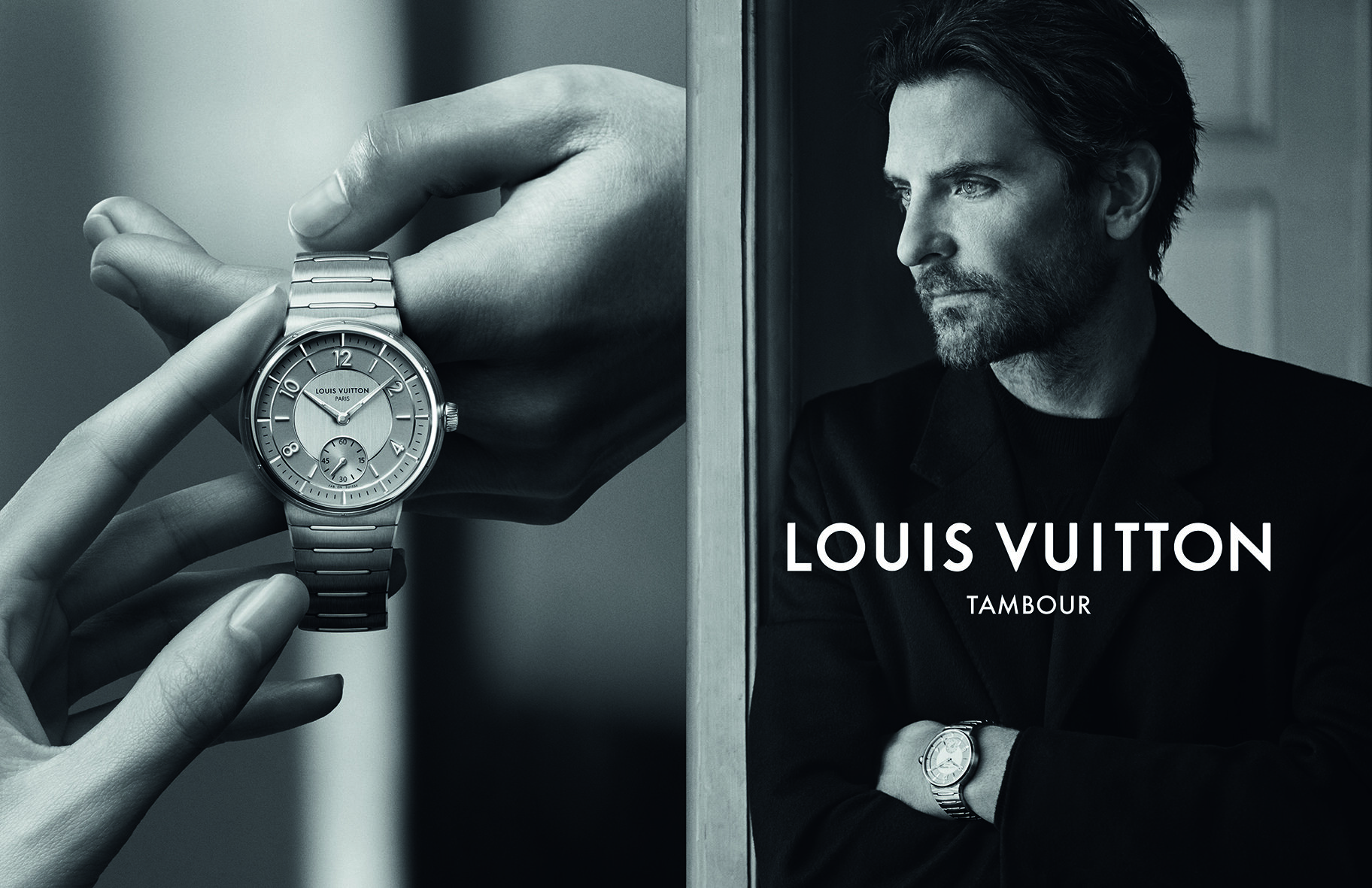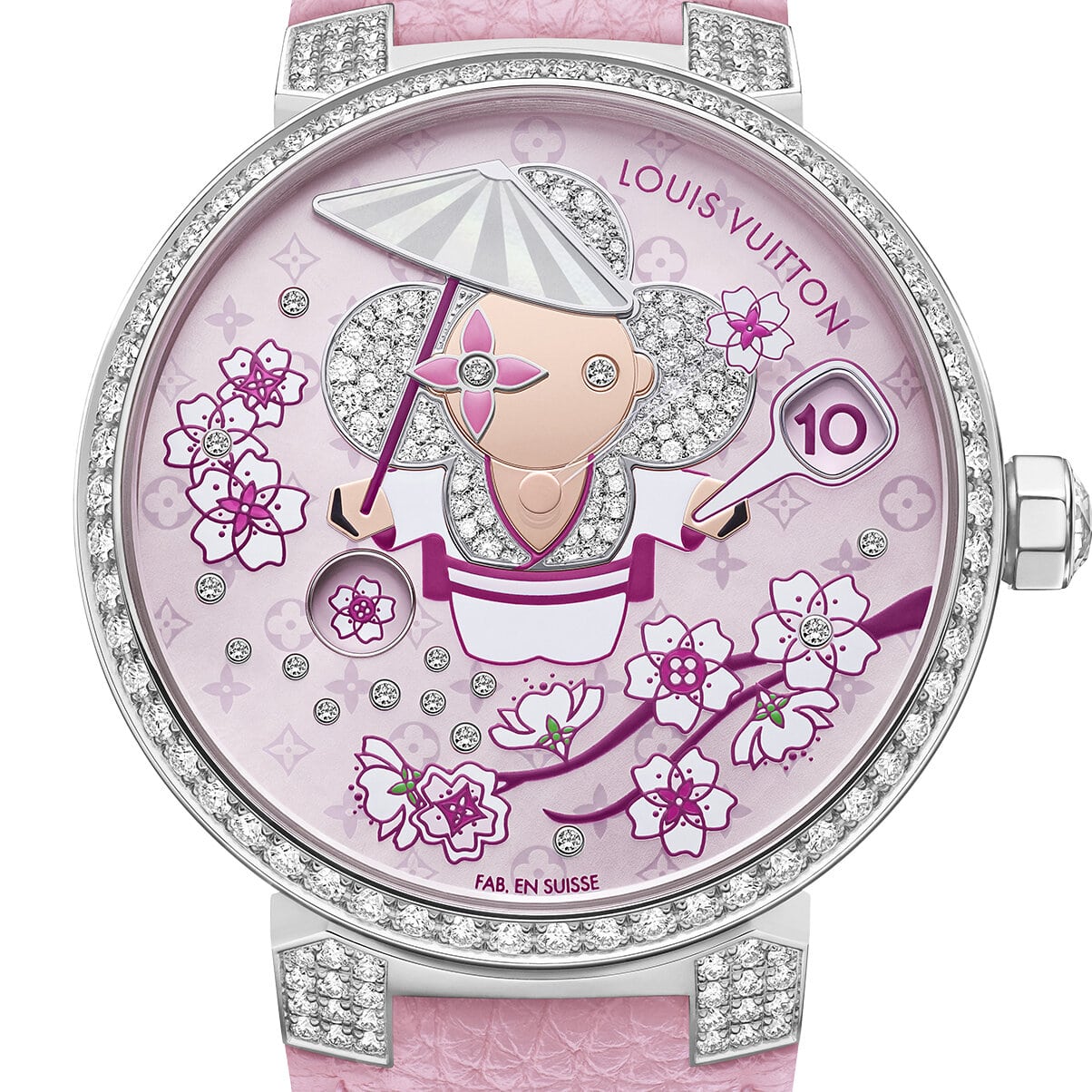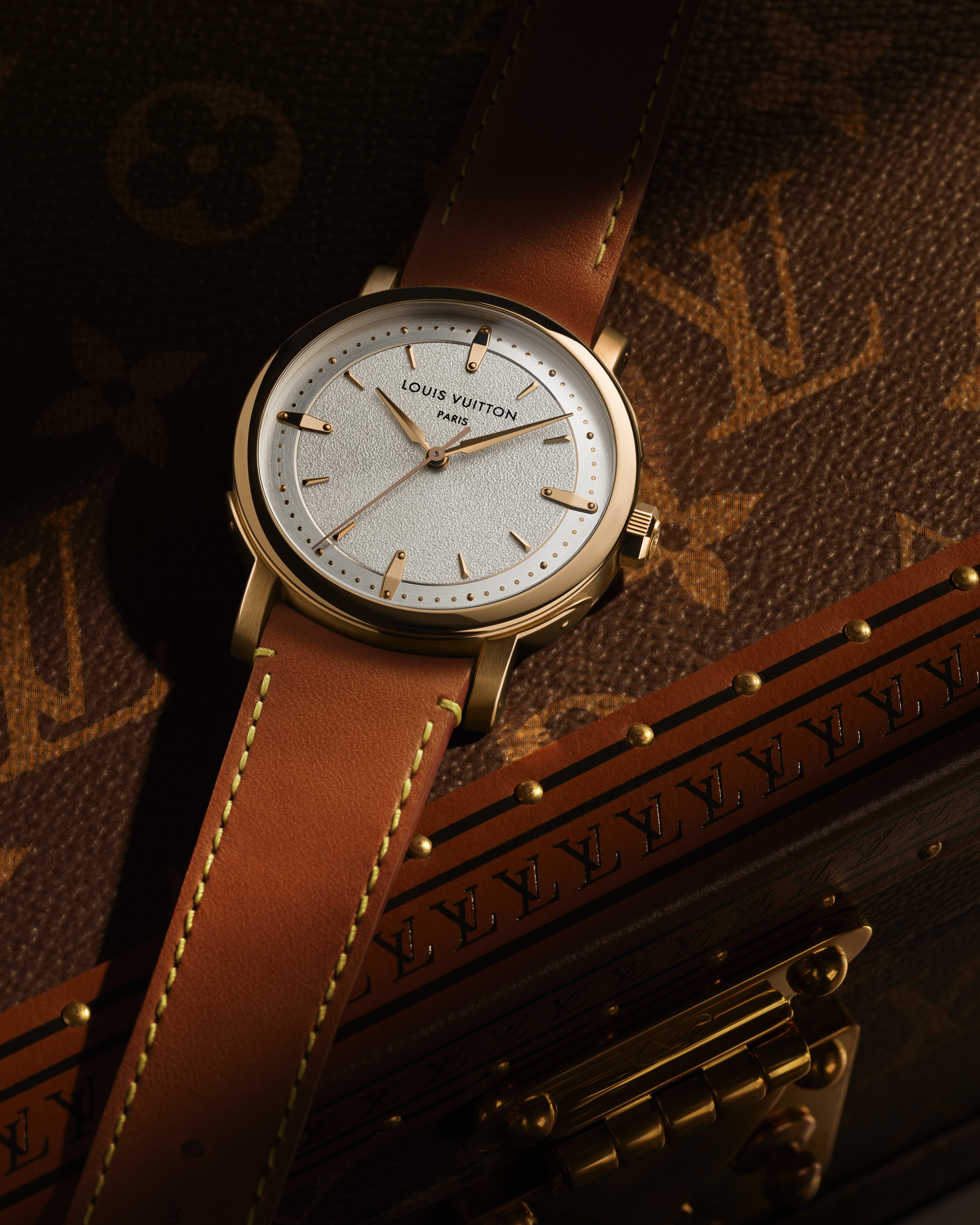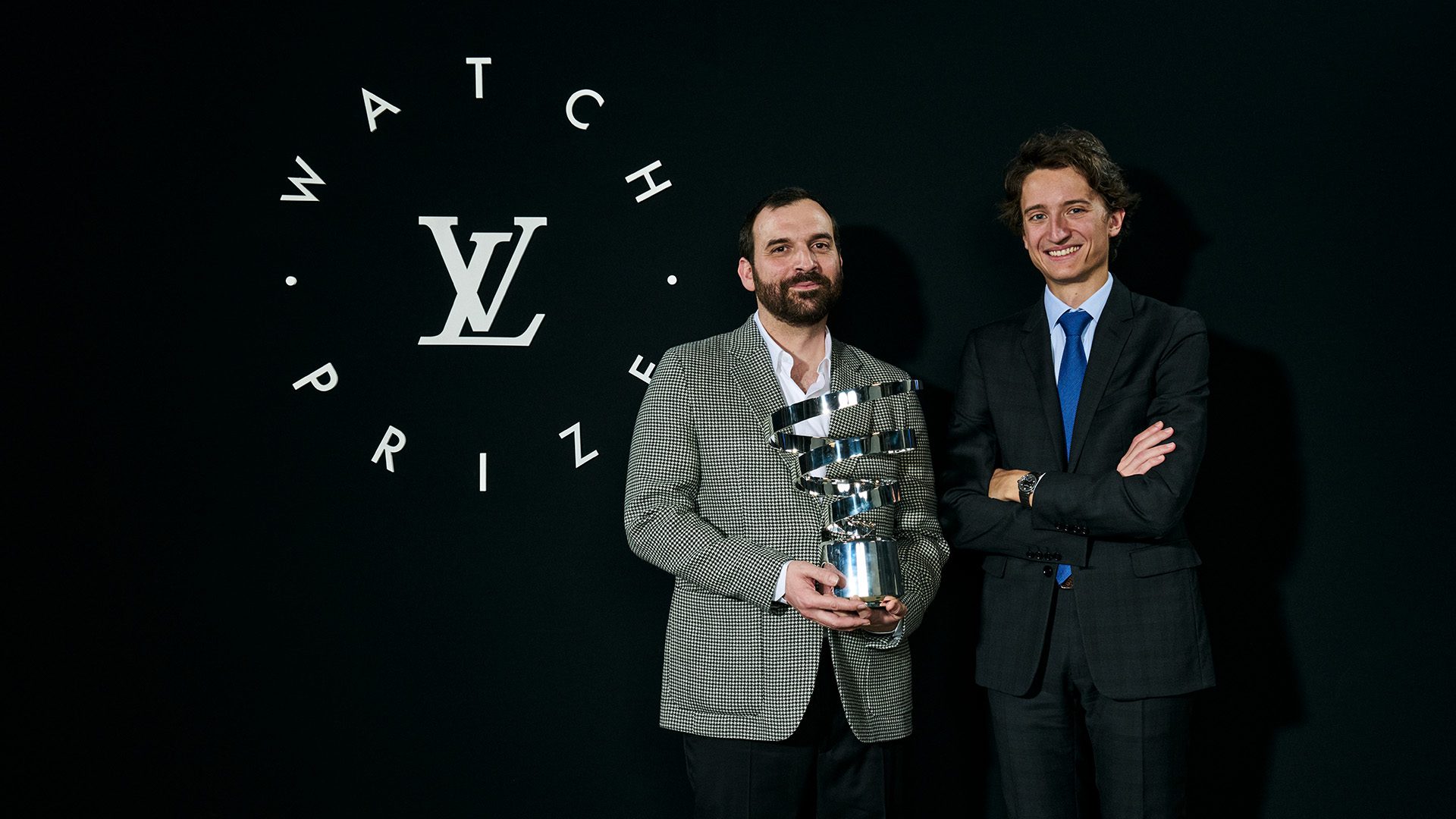One of the most heartwarming moments to emerge from the recently concluded Geneva Watch Days (GWD)—which has only grown in scale since its inception back in 2020—was the ‘unboxing’, as it were, of the all-new Daniel Roth Tourbillon Rose Gold by none other than its eponymous watchmaker-founder, Daniel Roth himself. In the video, the septuagenarian Roth, who left the brand in 2000, is awestruck by the latest model’s guilloche dial even as he savours the beauty of its movement (it is important to note here that the timepiece itself is heavily inspired from Tourbillon C187, which was designed by Roth, also the creator of Breguet’s first tourbillon wristwatch back in the ’70s.)
The revival of the independent brand Daniel Roth then, which stopped making timepieces in 2015 and made a resounding comeback last year with the Tourbillon Souscription, has unequivocally been one of the key industry highlights of 2023. Moreover, this year’s launch—not a limited edition but capped at 50 pieces due to capacity constraints—has also been well received. But what’s perhaps more fascinating is how the LVMH Group, Daniel Roth’s parent company, has orchestrated this resurrection in a manner that’s nothing short of stellar: the brand now has their backing but also enjoys enough creative freedom to call itself independent. That’s not all; from reviving brands to repositioning others and making strategic shifts, recent developments clearly indicate that the luxury conglomerate’s watchmaking ambitions are stronger than ever. In this piece, we take a close look at them and decode what this means for the watch industry at large.
The Revival Route
Revisiting older models may not be an uncommon practice in the watch industry, but reviving old brands—especially those launched by legendary watchmakers and subsequently boasting a discerning, but dedicated following—can be challenging in more ways than one. Not that this has been any sort of deterrent for the LVMH Group; in fact, under the leadership of Jean Arnault, Director of Watches at Louis Vuitton, no stone has been left unturned to ensure that both Daniel Roth and Gérald Genta (another storied brand named after and founded by an iconic watchmaker) get the comeback they deserve.
After all, both brands (along with Louis Vuitton) operate under the aegis of La Fabrique du Temps Louis Vuitton, the high-end movement manufacturer of Michel Navas and Enrico Barbasini that LVMH purchased back in 2011. While Daniel Roth has been making news with its tourbillons encased in the signature double ellipse case, the Gérald Genta offerings—be it the Disney Mickey Mouse minute repeater or the recently unveiled Gentissima Oursin with its variants—too pay obeisance to their founder even as they incorporate the latest in watchmaking innovation. This master stroke, of improving upon established excellence, is also what has earned both brands the unwavering support of the respective founders/ their families.
Such has been Arnault’s faith in the might of these brands that they both made their presence felt at the LVMH Watch Week earlier this year, right alongside other watchmaking maisons of the group (Hublot, Zenith, TAG Heuer and Bvlgari, all of which are major players in the industry). This is only likely to continue at the group’s watchmaking events going forward; interestingly, Bvlgari and Daniel Roth also took part in GWD.
A Renewed Focus
It’s not just the revived brands that are receiving a fresh infusion of energy; brand Louis Vuitton too is getting a new direction under the young Arnault scion. For starters, the Tambour line, first introduced 21 years ago, has donned its most high-end avatar yet. The repositioning is also supported by innovation-fuelled firsts: the Tambour unveiled in July last year wore a redesigned case and was the brand’s first sports watch with an integrated metal bracelet; plus it comes with a new movement, the LFT023, which is the result of a collaboration between La Fabrique du Temps and the specialist movement workshop Le Cercle des Horlogers. The message is loud and clear: on offer is Haute Horlogerie, aka High Watchmaking and no longer the affordable, just fashion-oriented variety.
Not surprisingly, this renewed focus on craftsmanship, precious metals and technical finesse has not gone unnoticed. While the success enjoyed by the brand’s automaton models serves as the perfect example—the LV Tambour Opera Automata that launched last year certainly deserves a special mention—even the nominee lineup for this year’s GPHG awards, hailed as the Oscars of watchmaking, reflects this. For not one but three timepieces, namely, the Tambour Slim Vivienne Jumping Hours Sakura, the LVRR-01 Chronographe à Sonnerie (a collaboration with Rexhep Rexhepi’s Atelier Akrivia) and the Tambour have made the shortlist in the Ladies’ Complication, Chronograph and Iconic categories respectively.
The latest collection, the Louis Vuitton Escale, too has followed suit. On one hand, it is unapologetically inspired by Louis Vuitton trunks as evidenced in its highly textured and tactile surfaces, but at the same time, it is also not lacking on the technical front (it is powered by the same LFT023 movement). The new goal is obvious: to celebrate the brand’s fashion legacy but not be limited by it, and to produce in limited quantity brilliant watches that lie at the intersection of innovation and savoir faire.
The Right Moves
The LVMH Group’s vision for its watch division—which started in 1999 with the acquisition of TAG Heuer—doesn’t quite end there though: among the series of plans set in motion is one that bets heavily on promising talent in the watch industry. This in turn has birthed the Louis Vuitton Watch Prize for Independent Creatives, a biennial award that debuted earlier this year. “Young generations of watch enthusiasts are passionate and want to see new innovations on the market. That is why we want to create this initiative at La Fabrique du Temps Louis Vuitton,” said Jean Arnault in a press statement in 2022 when the prize was first announced, and true to his word, talented independent watchmakers such as Raúl Pagès, Simon Brette and Andreas Strehler are now getting the attention they are worthy of.
Other initiatives undertaken by the group include a concerted effort to be closer to the action; in June this year, LVMH, along with Chanel and Hermès, joined the W&W Geneva Foundation Board, signalling their commitment to the world’s largest watch fair. And who can forget the group’s recent acquisition of Swiza, the parent company of L’Epee 1839, which is well-known the world over for its high-end clocks and authentic ‘objets d’art’ featuring exceptional mechanisms and intricacies. Meanwhile, Tiffany and Co., which was acquired by LVMH in 2021, too is channelling its efforts into making serious (albeit with a high jewellery bent, in keeping with the brand ethos) timepieces; the brand’s Bird on a Flying Tourbillon is an apt example of what to expect in the coming days. All of these moves underscore the group’s enthusiastic efforts towards pushing its brands to the forefront of fine watchmaking.
Recognising True Potential
It is a well-known fact that the LVMH Group’s fashion and leather goods segment continues to bring in most of the moolah, but the potential shown by the watches and jewellery sector cannot be ignored either: according to a recent study by Statista, this segment generated revenues of approximately 10.9 billion euros last year, more than triple the revenue recorded in 2020.
That being said, after back-to-back record earnings in 2021, 2022 and 2023, the current year has not been all that great for the industry as a whole. As the June 2024 report released by the Federation of the Swiss Watch Industry states, “Six months into the year, the sector has shipped the equivalent of 12.9 billion francs abroad, representing a 3.3% reduction compared with the first half of last year.” Seemingly, it is this decline in demand for luxury watches across the world—especially in China and Hong Kong—that has prompted a series of reshuffles across senior leadership for several key brands.
At LVMH, Julien Tornare, who is credited with turning things around at Zenith Watches and was recently handed the reins at TAG Heuer, has now become the new Hublot CEO, replacing Ricardo Guadalupe. Antoine Pin, who was the Managing Director at Bvlgari’s Watch Division has now been promoted to the CEO role at TAG Heuer, with Laura Burdese, the former CMO at Bvlgari, now taking on the mantle of Deputy CEO at the brand. Announced by LVMH Watch Division CEO Frédéric Arnault, these changes are in line with the group’s larger strategy to elevate and upgrade the Maisons, ensuring sustained growth and innovation.
And while healthy competition and greater accountability are all very well, without a doubt the biggest talking point in recent times has been LVMH Chairman and CEO Bernard Arnault buying a private stake in rival luxury group Richemont, as reported by Bloomberg. The news even sent Richemont’s share price soaring by 2.6 percent, with speculation initially rampant around the addition of the Richemont Group’s brand portfolio to that of LVMH, before the senior Arnault clarified that it is a ‘very minor stake’.
In any case, we can be sure of one thing: the LVMH Group is now a more aggressive player in the watch industry than ever before. No longer known for just its trunks and bags, this luxury behemoth has firmly set its eyes on conquering the watch market and things are only about to get more interesting.
Captions (from top to bottom): The LVMH Group is eyeing a bigger share of the watch market; Daniel Roth Tourbillon Rose Gold; Gerald Genta Gentissima Oursin; brand ambassador Bradley Cooper wearing the LV Tambour; the LV Tambour Slim Vivienne Jumping Hours Sakura nominated for GPHG 2024; Louis Vuitton Escale watch; Raúl Pagès, winner of the first Louis Vuitton Watch Prize for Independent Creatives, with Jean Arnault, Director of Watches at Louis Vuitton; the L’Epee 1839 Time Flies clock; Julien Tornare, Ricardo Guadalupe, Frédéric Arnault and Antoine Pin at LVMH Watch Week; and La Fabrique du Temps Louis Vuitton, the high-end movement manufacturer of Michel Navas and Enrico Barbasini that LVMH purchased in 2011.
Images courtesy: https://gphg.org (for the LV Tambour Slim Vivienne Jumping Hours Sakura) and respective brands


